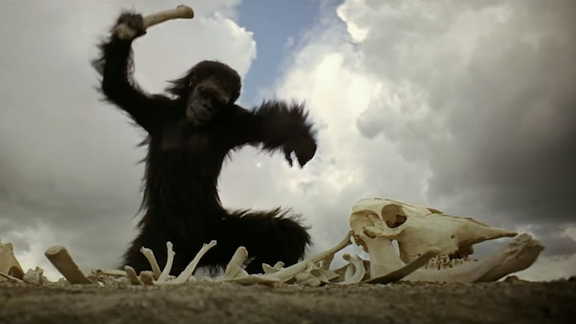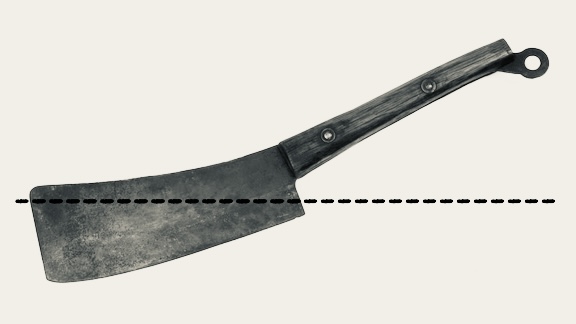
Note: Another one from 2006, so the argument is rough-hewn. I make the same points better, later—but this stands as a hopefully interesting artifact showing the genesis of my thought process.
Violence and How It Relates to Its Social Children: Martial Arts and Combat Sports
Violence is eons older than polite society. It had long been the dominant tool of last resort before anything even remotely human strode the savannah. But once we were here and began to pull together and organize against this hostile environment we call home, it became crucial to put limits on violence within society; you can’t build a pyramid if everyone’s busy choking each other out.
We added rules, decided society-by-society when it was appropriate and when it was not, who could do it to whom, and the state sanctioned the use of the tool on those who broke the rules.
This is the necessary order of history.
Violence, then, gave rise to traditional martial arts, which in turn produced combat sports. Makes sense, right?
It’s not so clear-cut to everyone. If I had a steel penny for every time I’ve heard someone refer to our training as being just like this or that martial art or a “really brutal” version of combat sports, I’d be able to fire torpedoes full of cash down on Bill Gates’ head from my solid-gold orbital railgun.*
Because the family tree goes
rock to the head –> crane style –> wrestling match
and not the other way around, this view is a funny one.
What we do is not the next step in the evolution of modern martial arts; it’s a return to the root of the whole matter. “Back to basics,” if you will.
Martial Arts: An Empty Bottle of Violence with a Child-Proof Cap
Long ago, the martial arts were the initial attempt to codify and keep knowledge of violence to train elite troops. As time went on and the schools got further and further from that original purpose—training for war—the teaching was more and more diluted with philosophy and religion. As well it should be—it’s wasn’t necessarily a Good Idea to train the average person in the skills of total war.
Instead, martial arts staked a claim to the foggy gray expanse of the antisocial realm: how to behave when dealing with social belligerents. Or, more plainly, how to be the best damn bar fighter to ever sit a stool.
This is the area that martial arts are famous for: “How do I deal with a drunk?”
It all starts with a bunch of rules on social decorum—essentially a checklist of social tools to try and defuse the antisocial bomb. When all that has been tried, and failed, then comes the fighting stance and perhaps a verbal warning: the stripe on the skunk, the cat arching its back and hissing. Then comes blocking, and “techniques” designed to convince the unruly to quit: punches, kicks, joint locks, etc., etc.
For the most part, it works. Martial arts have taken ownership of the antisocial realm and worked very hard to give practitioners a road map to navigate all the pitfalls and minefields. And if the situation is truly just antisocial in nature, blocking, punches, kicks, joint locks, etc., work well.
Combat Sports: Violence Made Palatable
Thanks to the internet, media that used to take some effort to get are now readily available—like video clips of unrestrained violence. There is, however, little interest in such things. Sane people cannot stomach real violence—we literally have a gut reaction to it. And it’s unpleasant.
Movies that attempt to recreate real-world violence—with an unflinching eye and no stylistic embellishments—make people leave the theater.
But what if we could make violence palatable? What if we could titillate and tease with just enough action to excite the predator within us all while maintaining enough padding to keep from scaring the higher-order functions?
Let’s say we put rules on it and make it a contest of strength, skill, and will instead of maiming and killing. I bet people would pay money to see that.
And they do.
But still we’re sickened when someone actually breaks an arm or loses an eye.
That’s because obvious, crippling injury is coloring outside the lines—it’s not social anymore. As long as we can all enjoy the sensation of watching the schoolyard tussle without crossing over into the schoolyard shooting, we’ll pay to play.
Violence: Not Just “Anything Goes” but “Do Your Worst”
What we strive to teach you is not just martial arts knobbed up to 11 or combat sports without the rules—it’s to get back to the genesis of all the rest of that stuff. It’s back to basics.
When people think of violence as martial arts gone wild, they are trying to drag an antisocial tool into the asocial. To be metaphorical, it’s like trying to use a crowbar as a lockpick—wrong tool for the job. To be more concrete, it’s like putting out your hand and shouting “No!” to dissuade a sociopath from killing you.
Wrong tool for the job, indeed.
When people think of violence as “combat sports without the rules” they’re also missing the point. Again, they’re thinking of violence as “anything goes” when it’s actually “do your worst.” While it sounds like pencil-necked semantics, it’s really a chilling distinction.
“Anything goes” means you can do anything, and when left to their own devices people will tend to choose non-awful things. Innate squeamishness will keep sane people away from the eyes, as seen in periorbital scratching, where people who were being strangled to death—murdered—chose to scratchat the eyes rather than dig them out. What other situation, outside of your own murder, could be more “anything goes”?
Violence, on the other hand, is “do your worst”, as in “go straight to the end of the list, pick the most godawful thing, and start there.” It means you will start by taking the person’s eye, then break their leg to drop them, and stomp them like you’re making an apocalyptic vintage from the grapes of wrath. No ifs, ands, or buts, no veering off from the socially unacceptable, the horrible, or the sickening. In fact, those things are your stock in trade. They are the tools you use—not “techniques”.
In violence you don’t best the person or even win—you do horrible, sickening, awful things to them. You do them first, without hesitation and without stopping out of pity or horror.
Is it really any wonder, then, that our ancestors sought to minimize and hobble violence with social constraints, limits, and rules?
— Chris Ranck-Buhr (from 2007, footnote 2020)
*Do you have any idea how much it costs to get a solid-gold, steel-jacketed I-beam into orbit? $227,057,702 in 2020 dollars. Yeah, I did the math.







